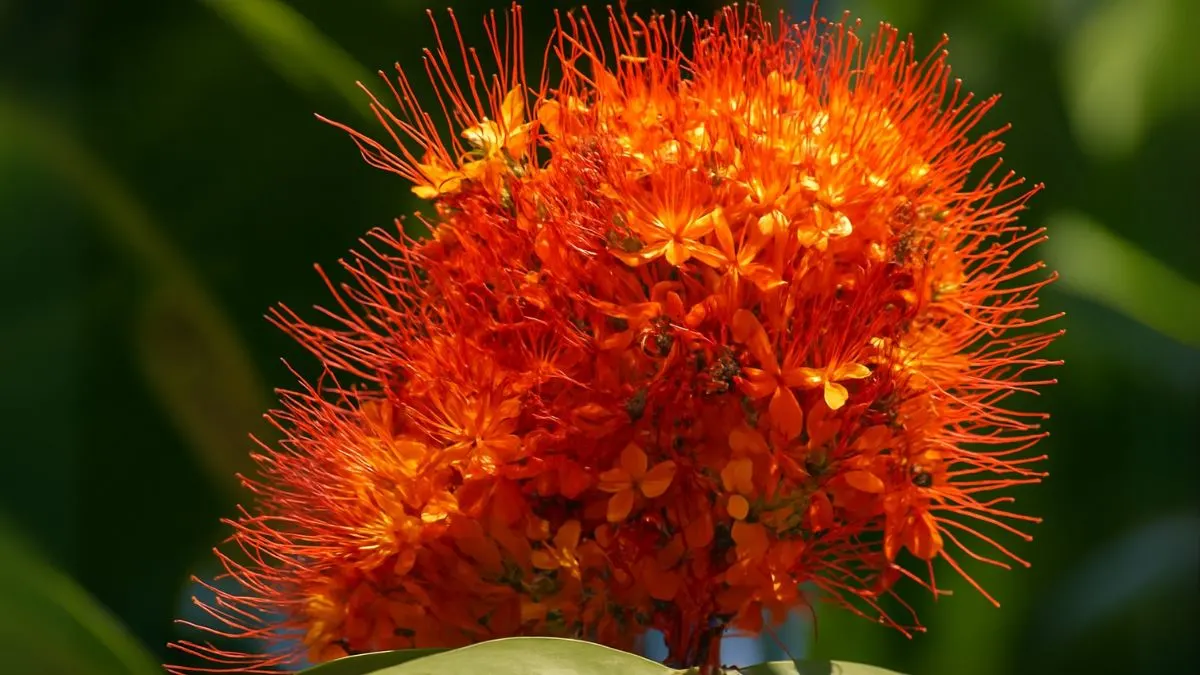The Sita Ashoka Tree is more than just a beautiful plant. It is a sacred evergreen tree native to the Indian subcontinent, known for its vibrant, fragrant orange-red flowers, and cultural significance in the Ramayana. From temple courtyards to modern gardens, this tree has captured the imagination of generations. Today, we’ll explore its history, cultural importance, appearance, and why it deserves a place in your heart and home garden.
Introduction: A Tree With a Story

When we think about trees, most of us recall shade, greenery, or fruits. But some trees carry stories that are centuries old. The Sita Ashoka is one such tree. With its deep roots in mythology and medicine, it is often regarded as a “living legend.” It’s not just admired in India but is also gaining attention worldwide, including in countries like Canada and the USA, where garden enthusiasts seek exotic plants with cultural symbolism.
The Botanical Identity of Sita Ashoka
Appearance and Growth Habit
The Sita Ashoka is a small to medium-sized evergreen tree that stands out for its graceful beauty. It has dark green, compound leaves and dense, rounded foliage, making it look lush throughout the year.
During flowering season, it becomes a spectacle. Clusters of vibrant, fragrant orange-red flowers bloom against the green backdrop, turning the tree into a canvas of color. This is why it is cherished as both a sacred and ornamental tree.
Also Read: Clematis: The Climbing Vine That Gives You a Wall of Blooms
Growth Conditions
- Thrives in tropical and subtropical climates.
- Prefers well-drained, fertile soil.
- Requires full sun to partial shade.
- Minimal maintenance once established.
Gardeners often plant it in open spaces for its dramatic blooms and evergreen foliage.
The Sacred Connection: Sita Ashoka in the Ramayana
One of the most powerful associations of this tree is with the Ramayana. According to legend, Sita, the wife of Lord Rama, was kept under captivity in Lanka in a grove of Ashoka trees. These trees offered her comfort and solace during her time of hardship.
This connection makes the Sita Ashoka not only a sacred evergreen tree but also a symbol of resilience, devotion, and strength. Many temples and households across India plant this tree as a mark of reverence.
Environmental and Cultural Benefits
Environmental Value
The Sita Ashoka, being a medium-sized evergreen, is a natural choice for eco-friendly landscaping. Its dense, rounded foliage provides shade and helps in cooling urban areas. The flowers attract pollinators, making it a biodiversity-friendly addition.
Cultural Significance
- Sacred Plant: Worshipped during festivals and rituals.
- Symbol of Love and Patience: Thanks to its connection with Sita.
- Aesthetic Beauty: Frequently planted in gardens, schools, and parks.
In Canada and the USA, it has become a talking point for communities who value cultural heritage and eco-conscious gardening.
Medicinal and Traditional Uses
In Ayurveda, parts of the Sita Ashoka tree are used in treatments for women’s health issues. Its bark and flowers are believed to have properties that balance the body and mind. This makes it not just a cultural treasure but also a natural healer.
Also Read: Petunias: The Flower That Turns Any Balcony Into a Blooming Paradise
How to Grow a Sita Ashoka Tree
Growing a Sita Ashoka tree isn’t complicated.
- Soil: Plant it in fertile, well-drained soil.
- Light: Ensure it gets full sun or partial shade.
- Water: Young trees need regular watering; mature ones are drought-tolerant.
- Space: As a small to medium-sized evergreen tree, it fits well in medium-sized gardens.
If you live outside India, consult local nurseries or botanical centers to find adapted varieties or related species that thrive in North American climates.
Quick Facts About Sita Ashoka Tree
Feature |
Details |
Botanical Name |
Saraca asoca |
Size |
Small to medium-sized evergreen |
Leaves |
Dark green, compound |
Flowers |
Vibrant, fragrant orange-red clusters |
Cultural Significance |
Sacred in Ramayana, associated with Sita |
Climate |
Tropical and subtropical |
Uses |
Ornamental, medicinal, sacred |
Personal Experience
I remember visiting a temple in Odisha where a full-grown Sita Ashoka tree stood at the entrance. Its flowers had fallen all around, creating a natural carpet of red and orange. People stopped to admire it, while others picked the blossoms as offerings. That moment made me realize how deeply intertwined plants can be with human emotions, history, and faith.
Also Read: Sanjeevani Plant: The Ancient Herb That Could Save Lives?
Global Perspective
In Canada and the USA, where winter conditions can be harsh, the Sita Ashoka tree often appears in greenhouses, botanical collections, or as a conversation-starter plant among enthusiasts of Indian culture. Its story makes it a favorite among expat communities and those who love mythological plants.
Why Sita Ashoka Matters Today
The Sita Ashoka tree is more than just a medium-sized evergreen with dark green, compound leaves and dense, rounded foliage. It is a tree of stories, resilience, and beauty. It represents cultural heritage, offers environmental benefits, and serves as a living reminder of devotion and patience from the Ramayana.
Planting this tree isn’t just about gardening—it’s about nurturing a symbol of hope and timeless beauty. Whether in India, Canada, or the USA, adding this tree to your space can enrich both your garden and your soul.






